Carolee Schneemann – Integrating the Body into Art
Carolee Schneemann was a pioneering artist whose work revolutionized the landscape of contemporary art. Born in 1939 in Pennsylvania, Schneemann’s multidisciplinary practice encompassed performance art, painting, filmmaking, and writing, challenging traditional notions of gender, sexuality, and the body. She is celebrated for her fearless exploration of taboos and her commitment to pushing the boundaries of artistic expression. Throughout her career, Schneemann’s provocative works sparked important dialogues about feminism, identity, and the politics of representation, leaving an indelible mark on the art world.
Key Takeaways
- Carolee Schneemann was a pioneering visual artist who used her body to explore themes of sexuality and gender.
- Her academic background laid the foundation for a career that challenged the norms of the art world.
- Schneemann’s legacy in art continues to influence the discourse on feminism and body art.
Early Life and Education
| Birth | October 12, 1939 |
| Death | March 6, 2019 |
| Place of Birth | Fox Chase, Pennsylvania, United States |
| Genre of Work | Performance art, Feminist art, and Multimedia art |
Carolee Schneemann was an American visual artist who reshaped contemporary art with her groundbreaking work on the human body, sexuality, and gender. Born on October 12, 1939, in Fox Chase, Pennsylvania, she pursued a formal education in the arts, obtaining a Bachelor of Arts in poetry and philosophy from Bard College, followed by a Master of Fine Arts from the University of Illinois. Schneemann distinguished herself in the world of avant-garde art, becoming a pivotal figure in the development of performance art.
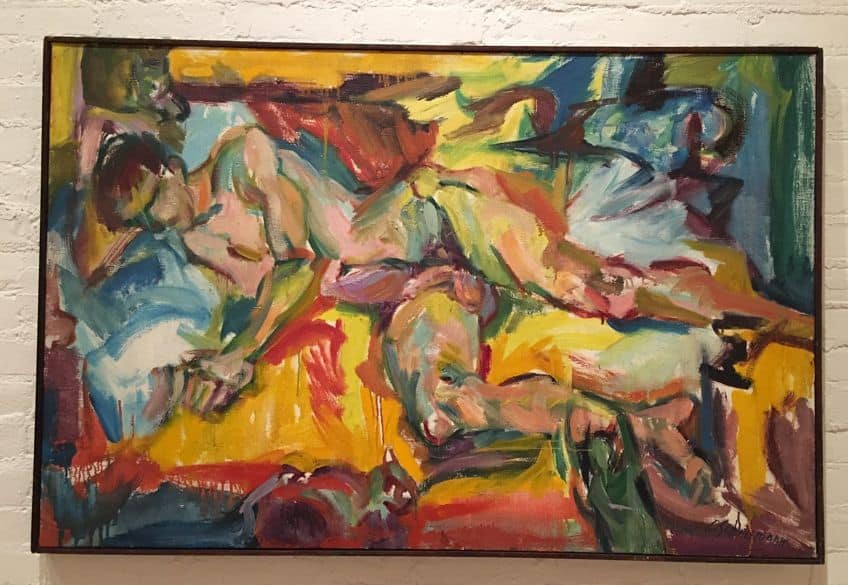
Throughout her expansive career, Schneemann’s work often centered on the themes of the female experience, eroticism, and the social constructions of the female body. Her performances and multimedia works were not only artistic expressions but also bold statements in feminism and identity politics. Schneemann’s approach to art was both reflective and provocative, as she utilized her own body as a primary medium.
This challenged conventional norms and explored the complex relationship between the personal and the political.
Academic Background
Schneemann received her B.A. in Poetry and Philosophy from Bard College, augmenting her academic pursuits with a rich engagement in the arts. She furthered her education at the University of Illinois, where she earned a Master of Fine Arts degree. She also attended Columbia University, where her academic experiences contributed to her evolving artistic expression.
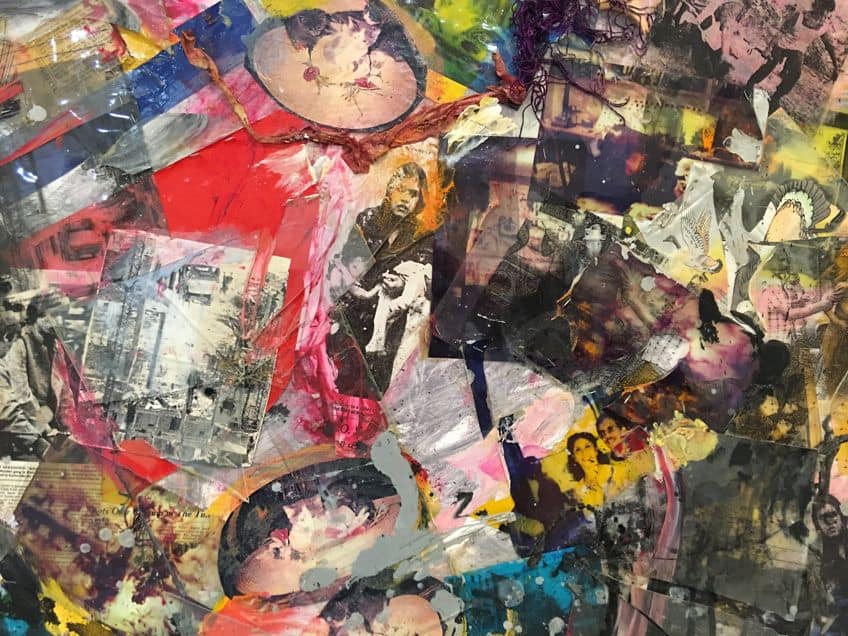
Artistic Influences
During her formative years, Schneemann began drawing, an early indicator of her future artistic endeavors. Her exposure to the arts was cemented with visits to the Philadelphia Museum of Art, where she felt a profound connection to the artworks. These experiences would later permeate her groundbreaking work in multimedia and performance art.
Notably, Schneemann was associated with composer James Tenney, whose influence was pivotal in her intellectual and artistic development during her time at Bard College.
Artistic Career
Carolee Schneemann’s artistic career was marked by pioneering contributions to performance art and experimental film. Her work often explored themes of the body, sexuality, and gender, and she is known for integrating unconventional materials into her art.
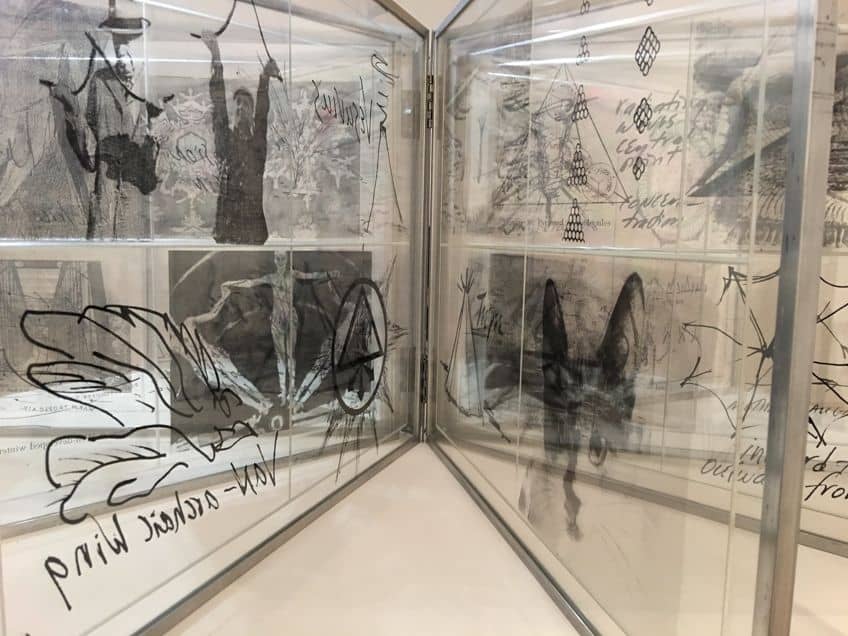
Accomplishments
Schneemann was an American visual experimental artist whose impactful work spanned across several mediums including performance art, film, and painting. Her work garnered significant attention for its innovative nature and its strong ties to feminist ideologies.
She was awarded a Master of Fine Arts from the University of Illinois, and her accomplishments extended to prestigious acknowledgments, such as the Golden Lion at the Venice Biennale.
Performance Art Breakthrough
Meat Joy (1964) and Interior Scroll (1975) stand as Schneemann’s key performances that broke traditional boundaries and became seminal works within the performance art genre. With Meat Joy, Schneemann crafted an experience marked by raw meats and human bodies in sensual and chaotic motion, reflecting avant-garde influences. Later, with Interior Scroll, Schneemann further pushed the envelope by reading from a scroll extracted from her vagina, challenging taboos around the female body and sexuality.
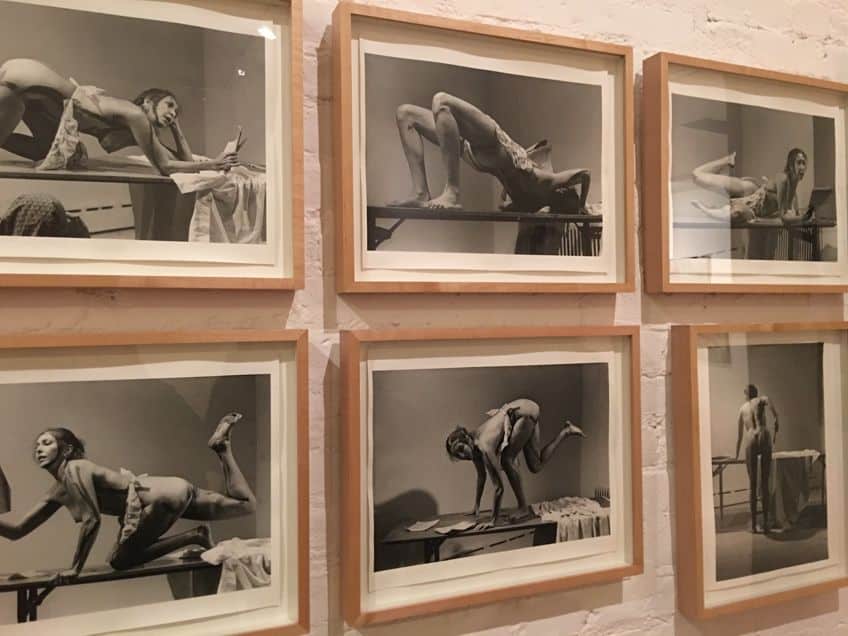
Experimental Filmmaking
Her film, Fuses (1967), an experimental film featuring intimate scenes of Schneemann with her partner, was a controversial yet celebrated work that explored sex and the relationship between the body and the avant-garde narrative.
Schneemann’s personal and daring approach to film-making received wide recognition for transforming the visual language associated with sex and gender.
Innovations in Painting
Initially trained as a painter, Schneemann began in the Abstract Expressionist tradition before transitioning towards works that fused painting with other mediums. Her series, Eye Body (1963), combined painting, photographs, and live models, which included her own body covered in various materials, constituting a form of action painting where the body itself became a canvas.
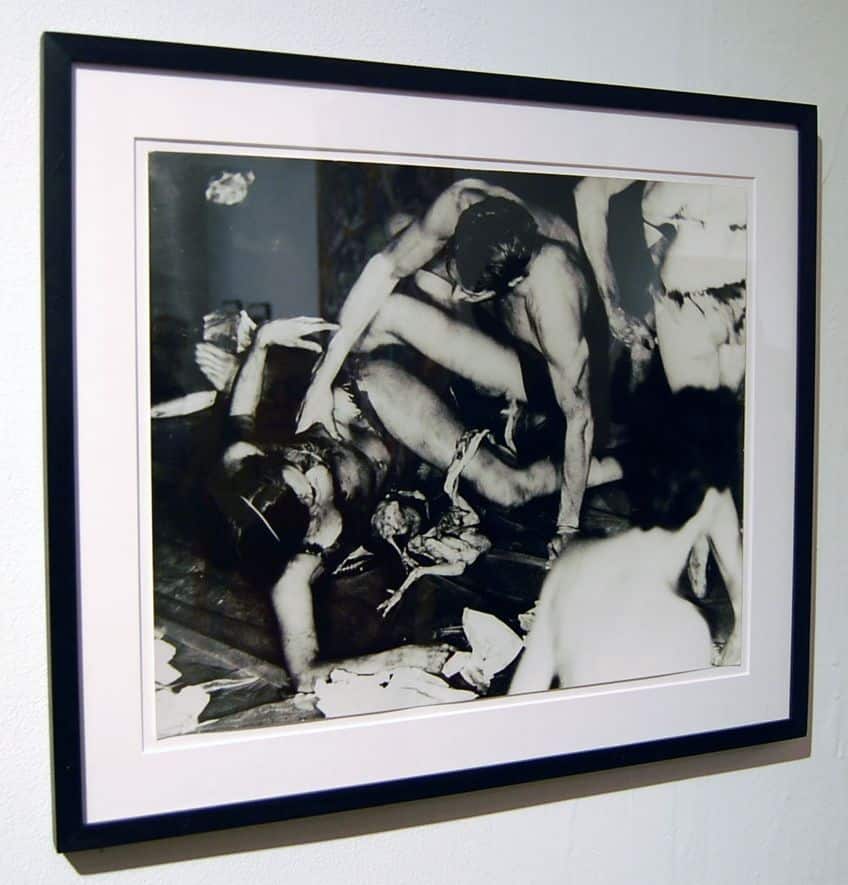
Late Career
Toward the later stages of her career, Schneemann’s continuous transformation of art practices led her to be showcased in revered institutions like the Museum of Modern Art.
Her consistent contribution to art, especially in illuminating the intricacies of feminist ideologies and gender politics, maintained her relevancy and prestige in the contemporary art world.
Themes and Impact
Carolee Schneemann’s work revolutionized feminist art with her bold exploration of the body, sexuality, and gender, often challenging societal norms concerning the female form and its representation.

Feminism and Body Politics
Schneemann’s performances and artwork were pivotal in the Feminist Art Movement, where she used her own body as a primary medium to interrogate issues of gender and sexuality.
Her iconic work, Interior Scroll, demonstrated her innovative approach, wherein she pulled a scroll from her vagina and read from it, asserting the female body as both a source of creative power and an art object in itself.
Challenging Taboos
The artist sought to confront and dismantle patriarchal morality by engaging with content that was often considered taboo. She wasn’t afraid to incorporate elements like blood or raw sausage in her art to draw attention to the physical and societal constraints imposed on women’s bodies. Physical contact and the visceral nature of her works left a permanent mark on the art community, encouraging a more open dialogue around controversial topics.

Legacy and Awards
Schneemann’s lasting legacy is evident in the continued discussion and study of her work in galleries and institutions globally. In recognition of her influence, she was awarded the esteemed Golden Lion at the Venice Biennale in 2017—a testament to her lifelong dedication to challenging norms and expanding the scope of feminist art.
Her work not only redefined the boundaries of artistic expression but also continues to inspire generations of artists to explore and critique societal constructs of power and gender.
Notable Artworks
Carolee Schneemann was renowned for pioneering work in multiple media, including performance, painting, and installation art. Her pieces frequently explored the body, sexuality, and gender.
- Eye Body: 36 Transformative Actions for Camera (1963): Schneemann integrated her painted and collaged body with an environment that included broken mirrors, motorized umbrellas, and live snakes. It is regarded as an early form of performance art that combines painting, sculpture, and photography.
- Meat Joy (1964): An iconic piece of the Fluxus movement, this performance entailed participants engaging in an ecstatic ‘celebration of flesh as material.’ They danced and writhed with raw fish, chickens, sausages, wet paint, and scraps of paper.
- Interior Scroll (1975): A defining piece in feminist art history, for this performance Schneemann removed a scroll from her vagina while reading from it. It underscored her message about reclaiming the female body from the predominance of the male gaze in art history.
- Up to and Including Her Limits (1976): In this piece, Schneemann suspended her body in a harness and created drawings on the walls and floor, which reflected the movements of her extended limbs.
These works were critical in shaping discussions about the body in visual culture and are seen as milestones that challenged and expanded the boundaries of art during her time.

Later Years and Death
In her later years, Carolee Schneemann continued to contribute significantly to the arts through teaching and remaining active in performances and exhibitions. The influential nature of her work remained evident in these engagements, which were a testament to her enduring impact on the discourse around the body, gender, and sexuality. Schneemann took on various roles in academia, sharing her expertise and insights with students and colleagues. She taught at several institutions, including California Institute of the Arts, Rutgers University, Hunter College, and SUNY New Paltz.
Her teaching extended beyond formal classroom settings to lectures and workshops, establishing herself as a mentor and thought leader in the art community.
Final Performances and Exhibitions
Her last performances and exhibitions were a culmination of her career’s themes, exploring the raw intricacies of human existence. Notable amongst these was her 2019 exhibition at the Los Angeles Museum of Contemporary Art and screenings at the London National Film Theatre. Schneemann’s book, More Than Meat Joy: Performance Works and Selected Writings, encapsulates some of her pivotal works, offering an enduring legacy. Despite a diagnosis of breast cancer, Schneemann persisted in her creative endeavors, leaving a profound mark on the art world. She passed away on March 6, 2019, and her pioneering contributions continue to inspire and provoke thoughtful discussion in the arts.
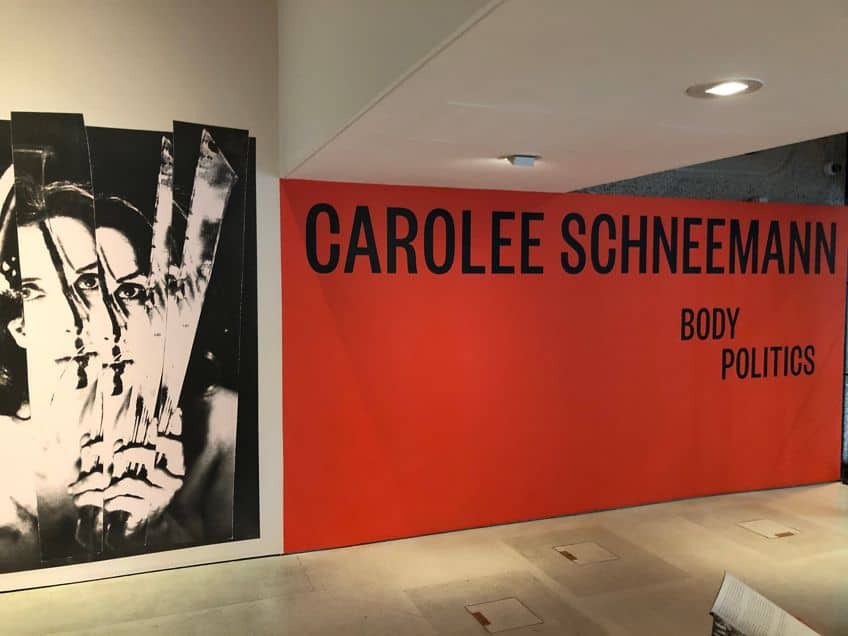
The Legacy of Carolee Schneemann
Carolee Schneemann’s impact on art is profound, especially in the arenas of performance and feminist art. She challenged the boundaries of contemporary art with works that incorporated her own body, often confronting themes of sexuality, gender, and identity. Schneemann’s artistic endeavors have influenced subsequent generations, inspiring artists to explore similar themes with a bold and unapologetic voice.
Schneemann’s practice crossed the realms of performance, filmmaking, and visual arts.
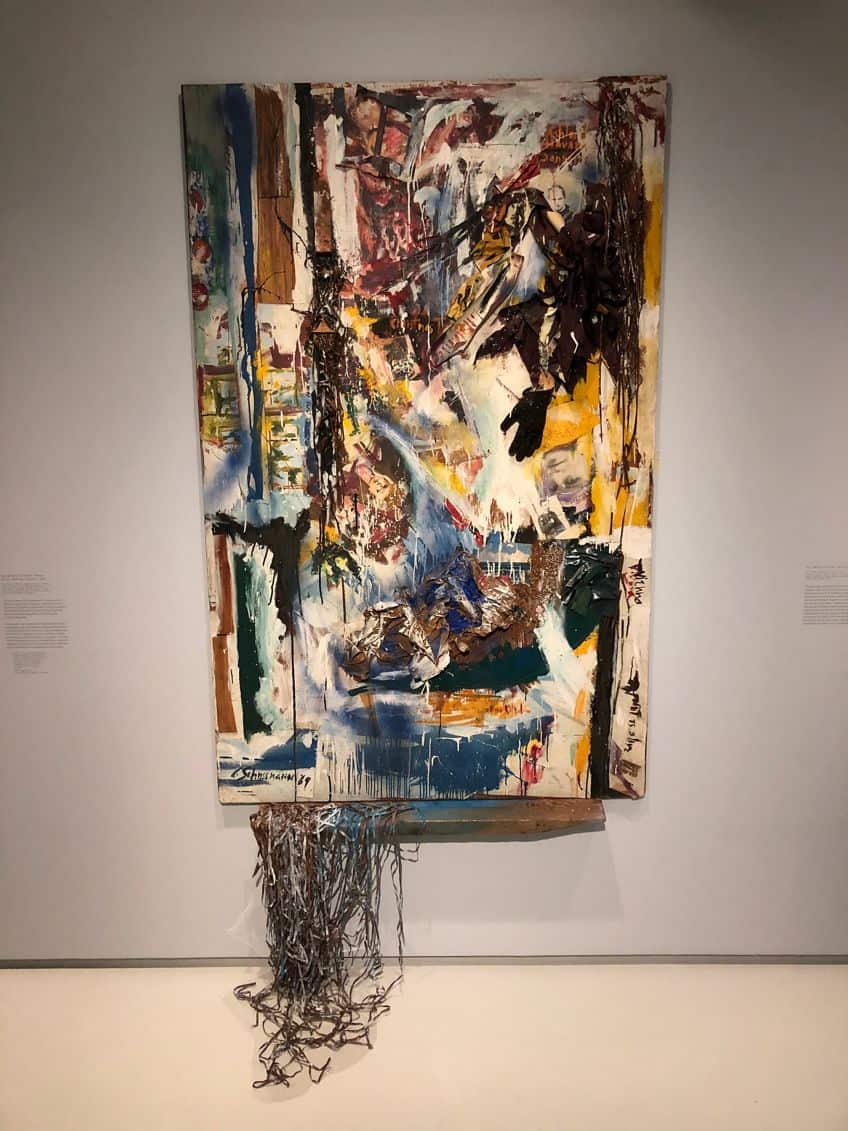
She was awarded the Golden Lion at the 2017 Venice Biennale, a testament to her influence and significance in the art world. Schneemann’s films, like Fuses and Meat Joy, broke new ground. Her approach gave precedent and voice to feminist filmmakers like Peggy Ahwesh and Abigail Child. Schneemann’s legacy is preserved through retrospectives and exhibitions. Institutions such as the Museum of Modern Art (MoMA) and the Barbican in London have explored her work, demonstrating her lasting impact on contemporary art. The trail she blazed marked a significant shift in how women’s bodies and expressions are viewed and understood in the context of art history.
Carolee Schneemann’s artistic legacy is a testament to her fearless and boundary-pushing approach to art. Through her pioneering work in performance, film, painting, and writing, she challenged societal norms, sparked crucial conversations about feminism and the body, and left an enduring impact on contemporary art. Schneemann’s unwavering commitment to pushing artistic boundaries and addressing complex themes like gender, sexuality, and identity continues to inspire artists and audiences alike, ensuring her place as a trailblazer in the history of art.
Frequently Asked Questions
What Are the Defining Characteristics of Carolee Schneemann’s Approach to Feminist Art?
Schneemann’s feminist art is known for its raw expression of the female body and sexuality. She often incorporated her body into her performances, challenging traditional narratives and societal taboos surrounding the female form. Schneemann’s work was revolutionary for its time, as it redirected the male-dominated perspective to include feminine experience and expression.
How Did Carolee Schneemann Contribute to the Evolution of Performance Art?
She drastically influenced performance art by including her own body as a central component of her work. This practice imbued her performances with a personal and political edge, confronting gender politics and the objectification of women. Schneemann’s performances often combined visual art, film, and dance, reflecting her multi-disciplinary approach to art-making.
What Role Did Carolee Schneemann Play in the History of Kinetic Painting?
Schneemann extended the boundaries of painting by introducing the concept of kinetic painting, where she combined painting with motion. Through performances such as Up to and Including Her Limits, she exploited the physical act of painting as a dynamic performative event, challenging the static nature of traditional canvas painting. This innovation contributed to the broader conversations of what constitutes painting in contemporary art practices.
Isabella studied at the University of Cape Town in South Africa and graduated with a Bachelor of Arts majoring in English Literature & Language and Psychology. Throughout her undergraduate years, she took Art History as an additional subject and absolutely loved it. Building on from her art history knowledge that began in high school, art has always been a particular area of fascination for her. From learning about artworks previously unknown to her, or sharpening her existing understanding of specific works, the ability to continue learning within this interesting sphere excites her greatly.
Her focal points of interest in art history encompass profiling specific artists and art movements, as it is these areas where she is able to really dig deep into the rich narrative of the art world. Additionally, she particularly enjoys exploring the different artistic styles of the 20th century, as well as the important impact that female artists have had on the development of art history.
Learn more about Isabella Meyer and the Art in Context Team.
Cite this Article
Isabella, Meyer, “Carolee Schneemann – Integrating the Body into Art.” Art in Context. April 22, 2024. URL: https://artincontext.org/carolee-schneemann/
Meyer, I. (2024, 22 April). Carolee Schneemann – Integrating the Body into Art. Art in Context. https://artincontext.org/carolee-schneemann/
Meyer, Isabella. “Carolee Schneemann – Integrating the Body into Art.” Art in Context, April 22, 2024. https://artincontext.org/carolee-schneemann/.










